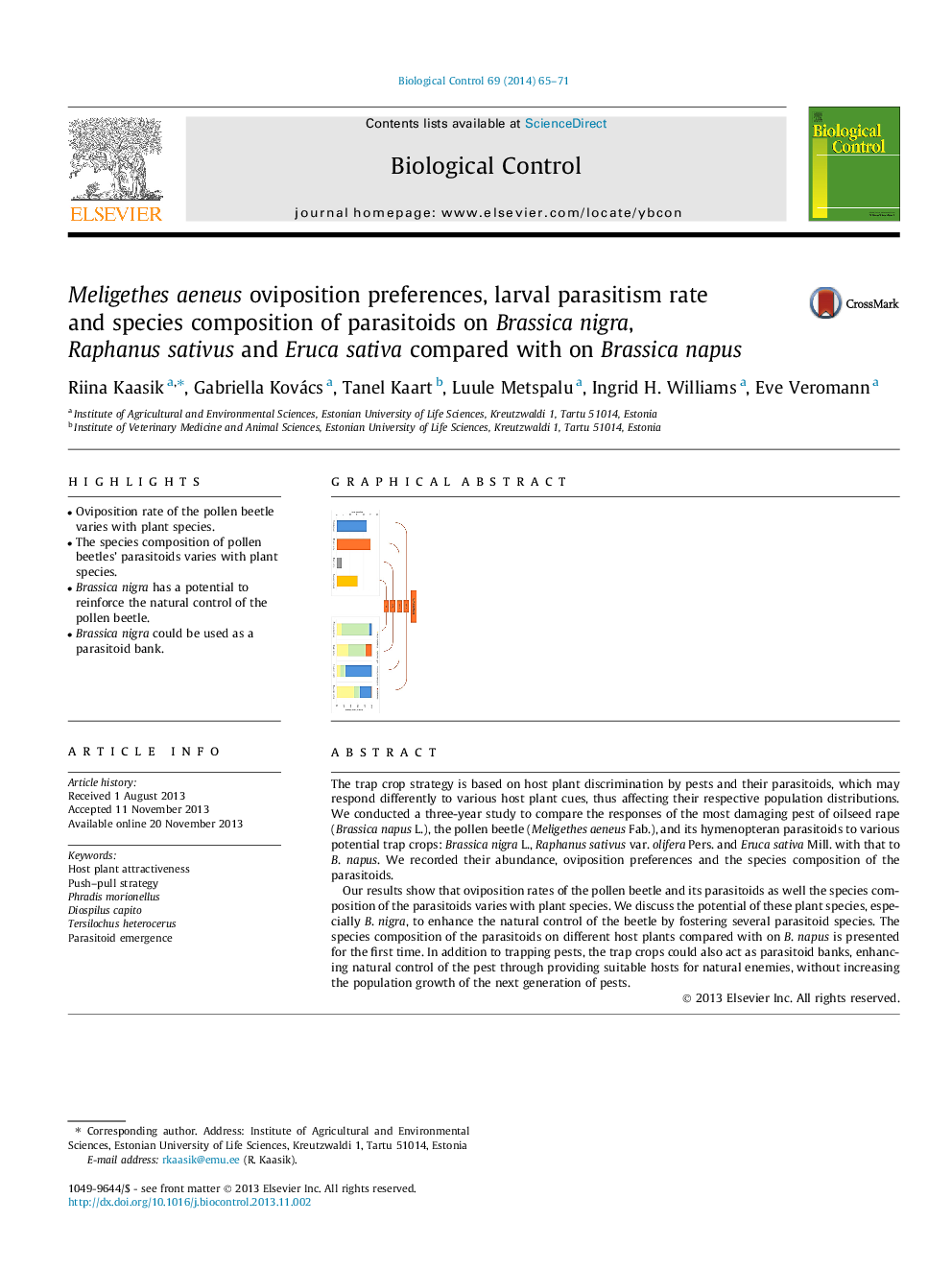| Article ID | Journal | Published Year | Pages | File Type |
|---|---|---|---|---|
| 4503982 | Biological Control | 2014 | 7 Pages |
•Oviposition rate of the pollen beetle varies with plant species.•The species composition of pollen beetles’ parasitoids varies with plant species.•Brassica nigra has a potential to reinforce the natural control of the pollen beetle.•Brassica nigra could be used as a parasitoid bank.
The trap crop strategy is based on host plant discrimination by pests and their parasitoids, which may respond differently to various host plant cues, thus affecting their respective population distributions. We conducted a three-year study to compare the responses of the most damaging pest of oilseed rape (Brassica napus L.), the pollen beetle (Meligethes aeneus Fab.), and its hymenopteran parasitoids to various potential trap crops: Brassica nigra L., Raphanus sativus var. olifera Pers. and Eruca sativa Mill. with that to B. napus. We recorded their abundance, oviposition preferences and the species composition of the parasitoids.Our results show that oviposition rates of the pollen beetle and its parasitoids as well the species composition of the parasitoids varies with plant species. We discuss the potential of these plant species, especially B. nigra, to enhance the natural control of the beetle by fostering several parasitoid species. The species composition of the parasitoids on different host plants compared with on B. napus is presented for the first time. In addition to trapping pests, the trap crops could also act as parasitoid banks, enhancing natural control of the pest through providing suitable hosts for natural enemies, without increasing the population growth of the next generation of pests.
Graphical abstractFigure optionsDownload full-size imageDownload as PowerPoint slide
